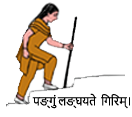Neck pain is a prevalent disabling problem affecting 80% of the population sometime during life. Many of such patients do not seek medical advice as the pain is short-lasting. Chronic (more than six weeks) neck pain is usually dull aching and may get aggravated by movement. Headache, numbness and tingling locally or in one of the limbs, stiffness of the neck, and pain in the shoulder or back may accompany. Anxiety and depression may be associated in some cases of chronic neck pain. Severe pain, pain at night, weakness in one or more limbs, fever, weight loss, change of voice, and difficulty in swallowing are dangerous symptoms associated with neck pain. X-Ray, CT scan, and MRI can be abnormal in many asymptomatic individuals and do not necessarily indicate the cause of neck pain in a given patient.
Causes: Bad posture and injury are common causes of neck pain. Bad posture strains ligaments, muscles, and joints of cervical vertebrae. Whiplash injury (movement of the head forwards and back) during vehicular accidents or sports injuries also causes acute or chronic neck pain. Cervical spondylosis is due to degeneration (wearing) of discs and joints due to aging. Tumors, infections, rheumatoid arthritis, ankylosing spondylitis, and referred pain (from heart or abdomen) are less common causes of neck pain.
Treatment: Exercise is an essential component of all neck pain therapies. Pain killers may be used for short periods only. Neither rest nor a neck collar is helpful. A cervical collar should be used for a short period, as prolonged use weakens neck muscles and nullifies the beneficial effects of exercise. A soft collar is not sufficient to cause adequate immobilization, whereas a rigid collar has problems of tolerance and compliance. Traction, too, has not shown any significant benefit. Massage, heat, laser, and other therapies are not adequate unless accompanied by exercise.
Prevention of neck pain:
- Do not slouch shoulders and bring your head forwards. Keep your neck straight – head back on your spine – but relaxed. Keep computer monitor at eye level.
- Change position frequently. Do not work head down for long hours. Avoid strained positions during reading and writing. Take frequent breaks.
- Do not hold your phone between ear and shoulder while talking.
- Do not sleep on your belly. Use a proper pillow. High pillow strains neck muscles. When lying on the side, use a pillow according to the size of your shoulder.
- Do regular exercises under the guidance of a physiotherapist if you have neck pain
